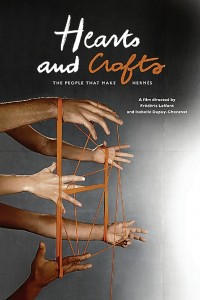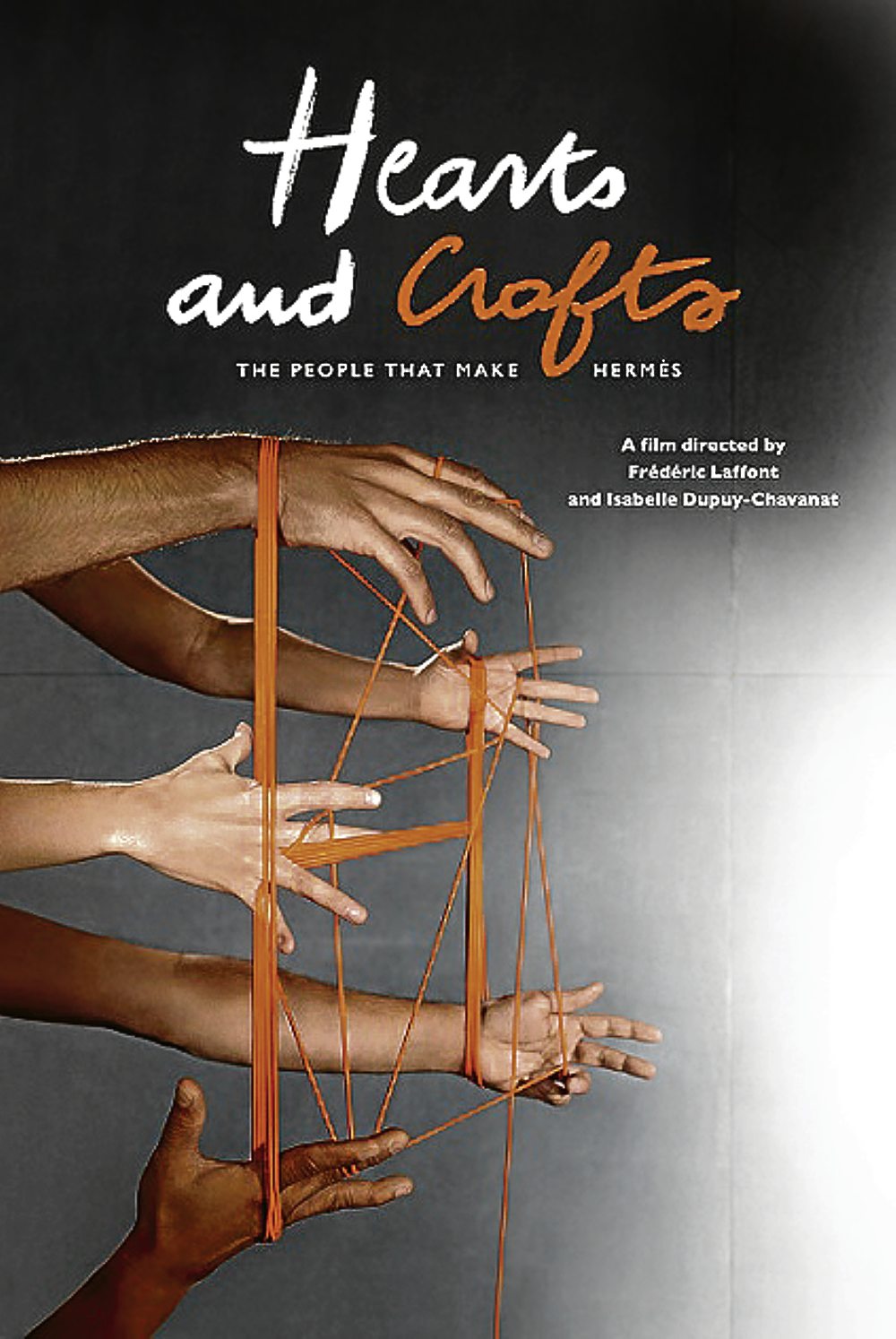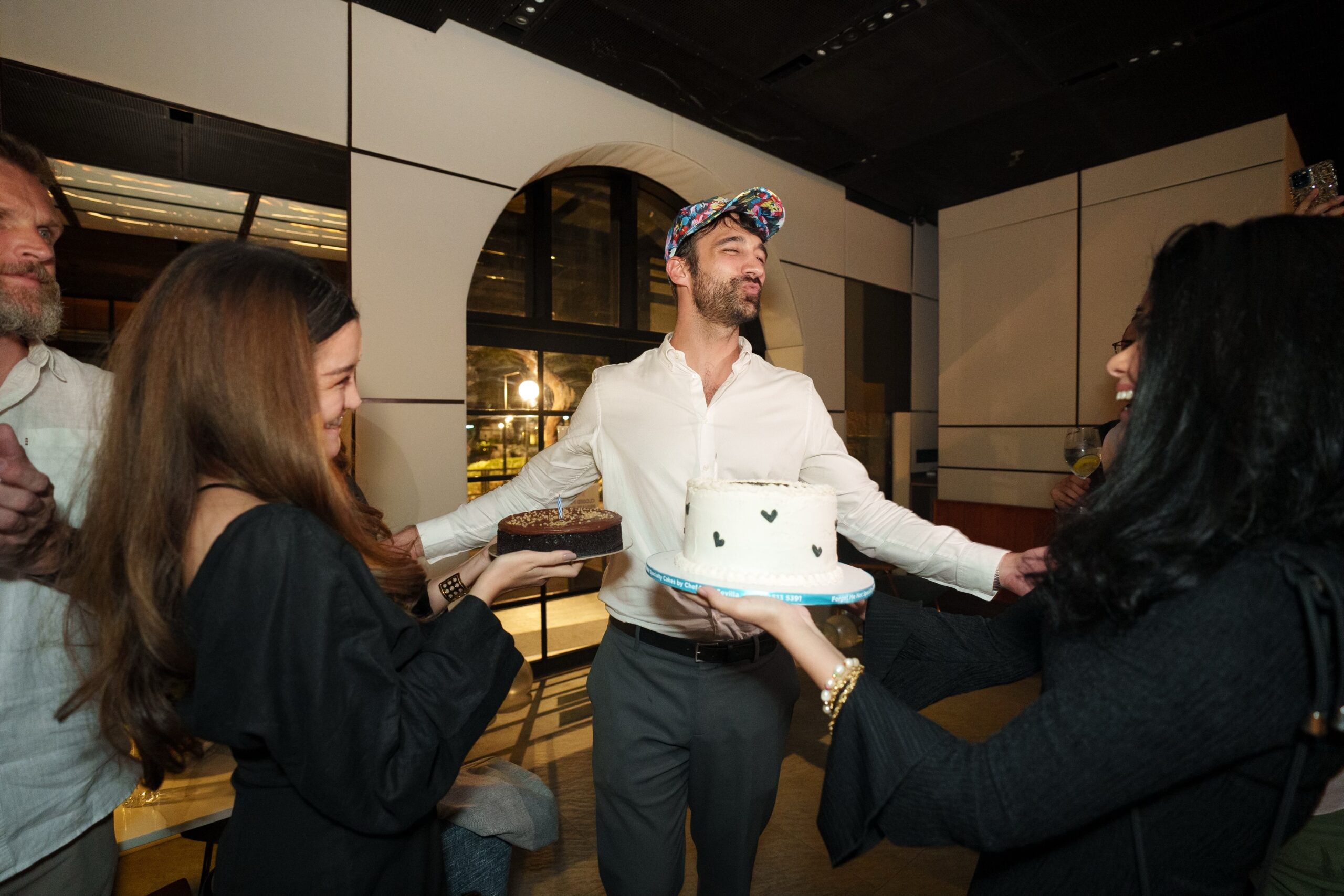In this age of mass production and assembly lines, it’s getting more difficult to comprehend why so-called artisan objects could cost so much. How could a scant piece of silk cost hundreds of d ollars from one house, when it’s a dime a dozen elsewhere? How could a handbag cost thousands of dollars when it’s just a bag?
ollars from one house, when it’s a dime a dozen elsewhere? How could a handbag cost thousands of dollars when it’s just a bag?
“This is why,” Isabelle Dupuy-Chavanat and Frederic Laffont seem to be saying in their documentary film for Hermès called “Hearts and Crafts,” which takes viewers through the French workshops of the legendary luxury house, and introduces them up close to the hands that create those coveted objects that, yes, cost so much.
The film opens at the Hermès saddlery in Pantin, a Paris suburb, where a worker is earnestly buffing a harness to a luscious sheen. Then it cuts to another pair of hands manually assembling pieces of cut leather with just thread and needle, then pans to a man running his cutter through a mantle of hide with surgical precision.
Luxury house
Hermès was founded in 1837 as a saddle maker for French noblemen. It would evolve into this revered luxury house that has expanded its trade to include handbags, apparel and footwear, silk, home ware, jewelry, watches and fragrances. But while every luxury house in Paris has just about succumbed to the demands of modern-day commercialism, inundating markets with heaps upon piles of so-called designer pieces from assembly lines, Hermès has stayed true to its roots, still relying on the expertise of generations of artisans and craftsmen who continue to create covetable everyday objects by hand. (Thus those legendary waiting lists for Hermès handbags, for instance.)
It all sounds very romantic and, perhaps, unlikely sounding in this age. But “Hearts and Crafts” endeavors to put a face on those men and women who labor long hours to create these objects.
While to some consumers, that Birkin handbag could simply mean a beautiful purse that’s a signifier of social status, to the solitary artisan who spent dozens of laborious hours piecing it together by hand, from start to finish, it’s even more personal. To him, it’s not just a paycheck, and its value not measured in euros or dollars.
“If you make car accessories, you don’t see the entire car, just parts,” says Didier, a leather craftsman in Bogny-sur-Meuse in northern France. (Hermès’ workshops are all company-owned and located in France. The company is still owned by the founder’s descendants.)
“In leather, we cut and assemble the pieces; we make a bag and put our craftsman mark on it. Simply adding the craftsman mark is a proud act, knowing your bag will travel the world and will be carried by someone. It becomes theirs but remains ours. It contains our soul and stitching.”
“There’s a satisfaction to doing something personal,” says another handbag maker. She has done other manual work “but it’s the artistic side that drew me” to leather. A leather craftsman can churn out up to 15 bags a month, but the work is never the same. “Handmade is always different,” she says. Sometimes a bag will be perfect, sometimes there will be challenges.
Back stories
“Hearts and Crafts” tells of the craftsmen and -women’s back stories, in a way other houses that churn out products from mechanical assembly lines can’t.
For instance, there’s Gerard Oberhauser, who works in the crystal workshop. His first brush with crystals was at age 8, bringing lunch to his father at the same factory. Oberhauser is a sixth-generation glassblower. In 1997, he was named best artisan in France. He still works alongside three of his brothers and a nephew. “We won’t be the last,” he says.
Then there are two women artists, a generation apart, both descended from families of fabric printers. Together they draw the designs for the silk fabrics. “Each drawing tells its own story,” says the older woman, who apprenticed at age 16, 33 years ago. She spends 1,500-2,000 painstaking hours on a single drawing. While one does the work in a traditional way, the younger woman does hers on a computer. There’s an exchange of knowledge between them, they say. “We think in color, but we draw in black.” A silk scarf that has 40 colors will require some 45 silkscreen frames.
Freedom
Then there’s Ali, a deaf-mute immigrant from Tunisia who proved wrong those who said he would only be good for housework. He makes jewelry at the Cambour workshop, interacts with coworkers using sign language, and even trains new recruits. This is proof that a craftsman’s labor doesn’t discriminate. At the time of the filming, a woman aged 59 has just started her training at the leather workshop.
There’s Michaël, who trained in classical singing as a young boy, but tragically lost his singing voice. “I didn’t lose my reason to live,” he says. “Leather and the way it can be manipulated is like singing. Certain leathers sing when rubbed. Others make no sound out all.”
There’s Elise of the Asian ethnic tribe Hmong, who grew up in Lyon in traditional patriarchal Hmong culture. At Hermès’ Ateliers AS, she mixes dyes. “I grew up in the dark,” she says. The workshop “introduced me to freedom.”
There’s Maguelone who studied at university but refused to end up with doing something “ordinary.” She works at Pantin crafting handbags. “When I say I make handbags, people ask, How about later? Are my parents happy about it? People seem to think that what I do is easy.”
(At the Hermès special media screening last week, one editor expressed her amusement at this. “So the French think the same way as Filipinos about manual labor?” she asked.)
Intimate look
The film also allows for an intimate look into the process of making those iconic handbags. There’s the leather expert who carefully appraises and grades crocodile hide, poring at it, caressing it like he would a woman in his bed.
But “it’s done in a glance,” he says. “I know what will be back, front and flap. It’s difficult to explain. Some think I’m clever. It’s just my job… Each skin is different. I read the skin.”
“Hearts and Crafts” is a journey back to a bygone era. More than a justification of the price attached to an Hermès item, it’s a tribute to its craftsmen and women, an hommage to their work and the generations of artisans who came before them, and a salute to those who will take their place.
“Your grandparents’ money will be lost,” says one, “but manual labor will always be there.”
“The term craftsman gives me goosebumps,” says another. “I like it a lot and want to remain one.”









































